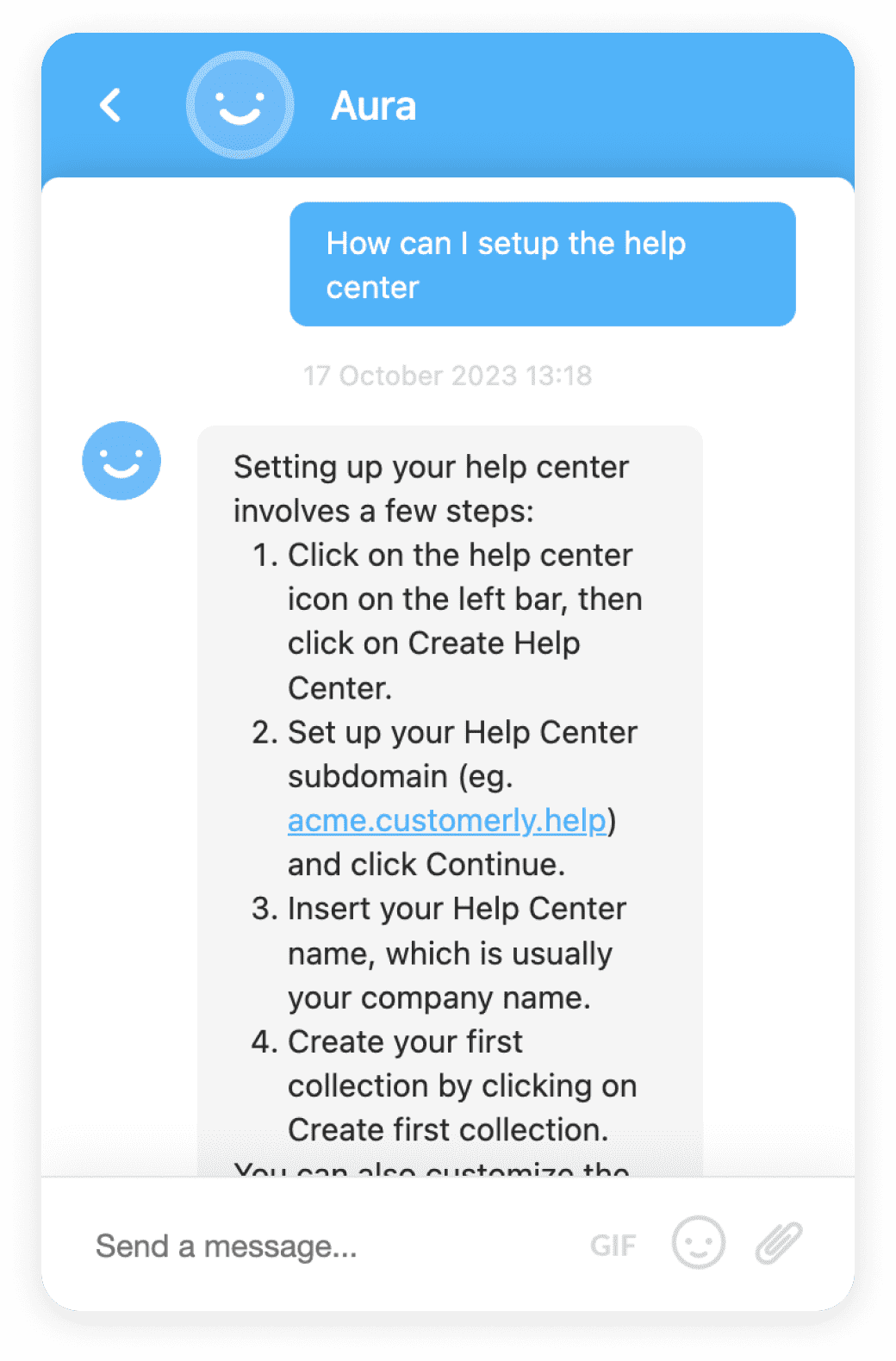Lead Grading
Learn about Lead Grading, a system used in marketing and sales to rate the potential value of leads, helping businesses prioritize their leads and increase conversion rates.
Definition
Lead grading is a system used in marketing and sales to rate or qualify the potential value of leads. It involves evaluating each lead based on specific criteria, such as their level of interest, their fit with the company's product or service, their purchasing power, and their readiness to buy. This grading system helps businesses prioritize their leads, focus on the most promising ones, and increase their conversion rates.
Usage and Context
Lead grading is used in various industries and types of businesses, but it's especially common in B2B marketing and sales. It's typically used alongside lead scoring. While lead scoring ranks leads based on their behaviors and interactions with the company, lead grading focuses more on the lead's inherent characteristics.
FAQ
What are the benefits of lead grading?
Lead grading helps businesses prioritize their sales efforts, focus on the most promising leads, and improve their conversion rates. It also helps them understand their target audience better and refine their marketing strategies.
How is lead grading different from lead scoring?
While both systems aim to qualify leads, lead scoring focuses on the lead's behaviors and interactions with the company, while lead grading focuses on the lead's inherent characteristics.
Related Software
Several CRM and marketing automation software offer lead grading features, such as Salesforce, HubSpot, and Pardot.
Benefits
Lead grading offers several benefits. It helps businesses save time and resources by focusing their efforts on the most promising leads. It also helps them understand their target audience better, refine their marketing strategies, and ultimately improve their sales and revenue.
Conclusion
In conclusion, lead grading is a valuable tool for any business looking to optimize their sales and marketing efforts. By understanding and applying this system, businesses can significantly increase their chances of converting leads into customers.
Related Terms
CRM (Customer Relationship Management)
Explaining CRM (Customer Relationship Management), a strategy for managing a company's relationships and interactions with customers and potential customers.CRM Analyst
A CRM Analyst is a professional who uses data analysis to improve a company's relationships with its customers, focusing on customer retention and sales growth.CRM Director
A CRM Director is a leadership role responsible for managing customer relationship strategies, enhancing customer satisfaction and leveraging CRM software.CRM Integration
CRM Integration is the process of connecting your CRM software with other systems to streamline operations, improve data accuracy, and enhance customer service.CRM Manager
A CRM Manager is a professional responsible for managing a company's interactions with its customers using CRM software.CRM Software
CRM Software is a tool that helps businesses manage customer interactions and data, improve customer relationships, and drive sales growth.CRM Specialist
A CRM Specialist manages a company's interactions with customers using CRM systems to enhance relationships, retain customers, and drive sales growth.CRM Strategist
A CRM Strategist is a professional who uses CRM systems to manage a company's interaction with its customers and potential customers to drive business growth.CRO (Conversion Rate Optimization)
CRO (Conversion Rate Optimization) is a systematic process that increases the percentage of website visitors who complete a desired action, thus improving a website's effectiveness.Conversion Rate
Conversion Rate is a key metric in digital marketing, measuring the percentage of website visitors who take a desired action.Conversion Rate Optimization
Conversion Rate Optimization (CRO) is the process of increasing the percentage of website visitors who complete a desired action. Learn more about CRO.Email Marketing Automation
Learn about Email Marketing Automation, its usage, benefits, related software and common questions related to it.Inbound Marketing Automation
Inbound Marketing Automation refers to the use of software to automate inbound marketing tasks, enhancing efficiency and personalization.Lead Scoring
Lead scoring is a methodology used in business to rank prospects based on their perceived value to the organization.Lead Scoring Analyst
A Lead Scoring Analyst is a professional who evaluates and scores leads based on their likelihood to become customers, helping to optimize the sales process.Lead Scoring Manager
A Lead Scoring Manager is a professional who evaluates and ranks leads based on their value to the company, helping to prioritize sales efforts.Lead Scoring Specialist
A Lead Scoring Specialist is a professional who evaluates and assigns values to leads, helping businesses prioritize their marketing and sales efforts.Lead Scoring Strategist
A Lead Scoring Strategist is a professional who ranks leads to determine their sales-readiness, helping businesses prioritize leads and increase conversion rates.MA (Marketing Automation)
A comprehensive guide on Marketing Automation (MA), its usage, benefits, related software, and common FAQs.Marketing Automation
Marketing Automation is a technology that manages marketing processes and campaigns across multiple channels, automatically. It is used to streamline, automate, and measure marketing tasks.Marketing Automation Analytics
Marketing Automation Analytics is the process of analyzing data from marketing automation tools to optimize strategies and improve ROI.Marketing Automation Architect
A Marketing Automation Architect designs and manages marketing automation systems, integrating them with other business systems to streamline marketing operations.Marketing Automation Consultant
A Marketing Automation Consultant helps businesses optimize their marketing efforts using automation tools and strategies.Marketing Automation Consulting
Marketing Automation Consulting is a service that helps businesses implement and optimize marketing automation strategies to improve efficiency and drive growth.Marketing Automation Coordinator
A Marketing Automation Coordinator manages and executes marketing campaigns through automation software, ensuring the success of automated marketing efforts.Marketing Automation Developer
A Marketing Automation Developer is a professional who creates and manages software applications designed to automate marketing tasks.Marketing Automation Director
A Marketing Automation Director oversees the use of automation tools in marketing processes, improving efficiency and revenue.Marketing Automation Executive
A Marketing Automation Executive is a professional who manages and optimizes a company's automated marketing strategies, leveraging marketing automation tools.Marketing Automation Manager
A Marketing Automation Manager oversees the use of technology to streamline, automate, and analyze marketing tasks and workflows.Marketing Automation Officer
A Marketing Automation Officer is a professional who manages and optimizes a company's automated marketing strategies to increase efficiency and revenue growth.Marketing Automation Platform
A Marketing Automation Platform is a software that helps businesses to automate marketing tasks, leading to increased efficiency and revenue.Marketing Automation Software
Marketing automation software is a tool that automates marketing tasks, increases efficiency, and improves customer engagement.Marketing Automation Specialist
A Marketing Automation Specialist is a professional who uses marketing automation software to streamline, automate, and measure marketing tasks and workflows.Marketing Automation Strategist
A Marketing Automation Strategist is a professional who designs and manages automated marketing strategies. They use software to automate tasks, increase efficiency, and improve customer experiences.Marketing Automation Technician
A Marketing Automation Technician manages the implementation of marketing automation systems, increasing efficiency and reducing errors in marketing efforts.Mobile Marketing Automation
Mobile Marketing Automation is a technology-driven solution used to automate repetitive tasks in mobile marketing, enhancing engagement and conversion rates.Predictive Lead Scoring
Predictive lead scoring is a method used to determine the likelihood of a lead converting into a customer, using historical data and predictive analytics.Real Estate CRM
Real Estate CRM is a software that helps real estate professionals manage customer interactions, track leads, and execute marketing campaigns.Real-Time Marketing Automation
Real-Time Marketing Automation refers to the use of software to trigger personalized marketing actions based on real-time customer behaviors.SCRM (Social Customer Relationship Management)
SCRM is a strategy that integrates social media services into traditional CRM processes to engage with customers on a more personal level.Sales Funnel
A sales funnel is a model that illustrates the journey of a customer towards the purchase of a product or service.Sales Funnel Integration
Sales Funnel Integration is the process of combining and optimizing marketing and sales strategies to guide leads to becoming loyal customers.Search Engine Marketing Automation
Search Engine Marketing Automation (SEMA) is the use of software to automate tasks in search engine marketing, improving online visibility and traffic.Upsell Conversion Rate
Upsell Conversion Rate is a KPI that measures the effectiveness of upselling strategies. It's used to increase average order value and boost revenue.











